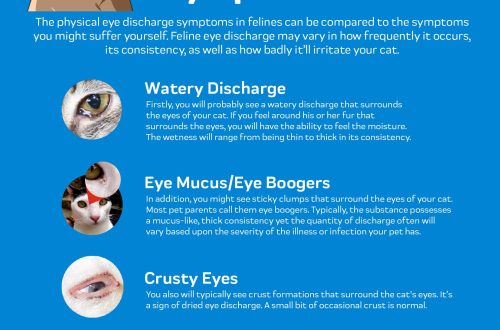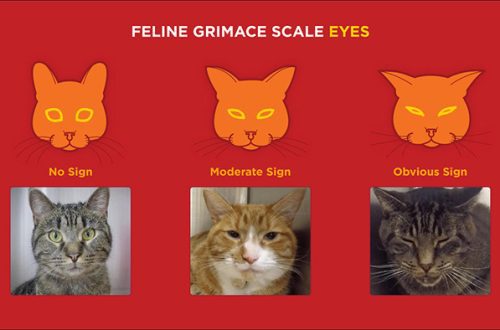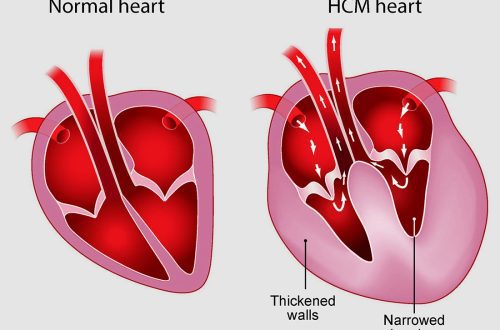
How to make an enema for a cat at home?

Contents
When should an enema be given?
The main indication for setting an enema is an appointment from the attending physician. If you suspect constipation in your cat, you should first contact a specialist for a diagnosis. Usually, not having a bowel movement for several days is not a life-threatening condition, and you still have time to find a doctor to examine the animal. If the diagnosis is confirmed and the doctor prescribed this procedure for constipation, then you can make an enema for the cat at home. It is usually given no more than twice a week, but each case is unique and recommendations may vary.
When should you not give an enema?
In no case should you give an enema before examining the animal by a doctor. Often, constipation can mask other health-threatening conditions. Very often, owners confuse with constipation the lack of urination in an animal due to a blockage in its urethra. Cats, according to the owners, behave typical of constipation: all day without any success they run into the tray, scream, lie down on the cold floor. If you give an enema to a cat in this state, not only will his health not improve, but there is also a high risk of rupture of the bladder, which can lead to the rapid death of the animal. Also, you can not put an enema to a pet with mechanical obstruction of the gastrointestinal tract. Setting an enema in this case will not help empty the intestines, and the movement of a foreign body can lead to injuries and ruptures. With persistent chronic constipation, a cat may develop a condition such as megacolon. This is an excessive expansion of the rectum, in which, as in a pocket, feces begin to accumulate. In this condition, an enema can be performed, but it is possible that this will not bring any success and surgery will be required.

Also, a contraindication to administering an enema to a cat are: bleeding in the gastrointestinal tract, acute inflammatory diseases, intestinal neoplasms, prolapse of the rectum, the first days after surgery on the gastrointestinal tract. With caution, this procedure should be carried out by pregnant and lactating cats. Animals with diseases of the cardiovascular system are at risk. If you are in doubt about the appropriateness of administering an enema to your pet, consult a third-party doctor and get a second opinion.
What are the types of enemas
Enemas can be divided into:
Treatment
These include cleansing and medicinal enemas. Cleansing enemas are used to treat constipation. They are oil (with an oil solution), hypertonic (with a saline solution) and microclysters (enema Microlax). Medicinal enemas can contain various drugs and be used for various purposes. For example, they can use herbal decoctions with anti-inflammatory properties. Cold enemas are used to reduce body temperature, and anticonvulsant enemas are used for an epileptic seizure.
Diagnostic
Such enemas can be used to inject a contrast agent into the rectum in order to diagnose tumors, ruptures, diverticula. Also, these enemas are used in preparation for an endoscopic examination of the rectum.

How to give an enema to a cat or a cat: step by step instructions
Preparation for staging
In order to give an enema to a cat at home, preliminary preparation is required. It is better to put all the necessary items in advance in convenient and accessible places. If you start the procedure with a cat and in the process realize that the item you need is in another room, catching a frightened pet a second time can be an overwhelming task. It is also better to carry out the preparation process without the presence of a cat in this room, so that she does not feel something was wrong in advance and does not hide. It is advisable to carry out this procedure with an assistant, it can be extremely difficult for one person to hold the cat and do the enema at the same time. So, for the procedure you will need:
Diapers or newspapers. It is very convenient to cover the floor with them, so that you can then collect and throw everything away without a long wash.
Rubber syringe. Its size depends on the size of the pet and the amount of enema prescribed by the doctor.
Petrolatum. It is useful for lubricating the syringe spout.
Warm water. It is necessary to heat the water to about 30 degrees. In order not to be mistaken, it is better to use a thermometer. High temperatures will cause burns, and low temperatures will cause intestinal spasms.
Large capacity. Suitable basin or tray, where the cat will fit after the procedure
Gloves. Do not neglect your own hygiene, and all manipulations are best done with gloves.
Towel or blanket. You will wrap the cat in it so that it does not injure anyone during the procedure.

Preparation of solution
It is necessary to prepare the solution strictly according to the doctor’s prescription. Different drugs and volumes of fluid may be needed to solve different problems. Here is an example of how to prepare the most commonly prescribed solution in order to properly administer an enema to a cat:
draw 200 ml of water into a large container;
heat it to a temperature of 30 degrees, check with a thermometer;
add 20 ml of vaseline oil;
stir well to emulsify, but do not foam.
enema technique
When all the equipment and solution are ready, you can proceed to the actual procedure. First, wrap the cat in a towel. Spread out a towel, stand or put the cat in the center. Wrap the cat: first with one end of the towel, then with the other on top. If the cat bites, it is better to cover the head with a towel. It is also worth wrapping up the hind legs, as the cats are very deftly wielding their claws on them. Leave only the butt and tail open. Further, in order to properly make an enema for a cat with constipation, you must follow the points:
We draw the required amount of water into the syringe.
We release excess air from it with gentle pressure.
Lubricate the tip with Vaseline.
Gently, slightly turning a few centimeters or until it stops in the feces, insert the tip into the anus of the animal.
Slowly begin to pour liquid into the intestines. If the entire prescribed volume cannot be entered, we take a break. Perhaps this is enough for the desired effect. If not, enter the rest of the volume after a few hours.
After the introduction of the desired volume, we take out the syringe and cover the anus by lowering the cat’s tail.
We do not let the cat go for 10-15 minutes. At this time, you can knead the feces through the abdominal wall with soft massaging movements.
We put the cat on the basin or tray, waiting for the result.

How to give an enema to a kitten
To make an enema for a small kitten at home, you should proceed according to the same points that are described by yours. Liquids will be used much less, so you need to check this item with your doctor. For small kittens, Microlax is most often used. So setting microclysters for a cat is easier and safer. But a full adult dose of microclysters for a baby will be too much. Therefore, the required dose must be taken with a small insulin syringe. It is very convenient to attach a small-diameter intravenous catheter without a needle to the syringe, so that only a rubber tube remains. It must be lubricated with Vaseline or Microlax itself. Then the tube should be carefully inserted into the anus and slowly, without effort, press on the syringe plunger. With a positive result, the effect will come in about 10-15 minutes. If there is no effect, the procedure can be repeated, but it is better to consult a doctor to make sure that you did everything correctly.

Causes, symptoms and prevention of constipation
In general, constipation in a cat, regardless of the cause that caused it, will manifest itself in a similar way. Owners are mostly able to independently notice the symptoms of constipation in a pet. At first, the cat does not show any signs of anxiety, only a more rare defecation can be noticed. Normally, a cat should empty its intestines daily, 1 time in 2 days is acceptable. Defecation once every 1 days or less should cause the owner to worry about the health of his pet. At the first sign of constipation, stools may be dry and small. Its shape may resemble rabbit feces or a thin ribbon. After a few days of complete absence of stools, due to pain in the abdomen, the cat will become restless, and the abdomen will feel tight to the touch. In about a week, intoxication of the body will begin, the pet will become lethargic, refuse to eat, and vomiting will begin. Without help, the animal will die.
Proper feeding plays a big role in the regular quality of the animal’s stool. Most often, problems arise when pets are fed unbalanced natural food from the table. A low fiber diet inevitably leads to constipation. Fiber contains foods such as carrots, pumpkin, zucchini. Too much fiber in a cat’s diet can cause constipation or loose stools. Unbalanced natural feeding, especially containing excess protein, leads to such a problem as nutritional hyperparathyroidism in kittens. With this disease, to compensate for the lack of blood, calcium begins to come out of the bones. Bones become brittle, brittle, transparent not x-ray. In such kittens, all bones are inevitably curved, including the bones of the pelvis. The pelvis narrows, and the feces simply cannot freely pass through it. Therefore, a natural diet should be prepared by a dietitian, or it is better to feed the pet with an industrial ready-made diet.

Feeding bones often leads to both constipation and intestinal injury. This condition should only be treated in a hospital setting.
Low water intake, especially when fed only dry food, can lead to dehydration and hardening of the stool. Dry stool passes through the intestines worse and can cause constipation. The cat’s water intake should be measured and should be at least 30 ml/kg per day.
If your cat is clean and has thick, long hair, the cause of constipation may be a buildup of hairballs in the intestines. This condition may also be accompanied by vomiting. For prevention, it is recommended to regularly give your pet a special paste, pads or food to remove hair from the body.
A more rare reason for the lack of stool is the development of a large number of helminths in the intestines of a cat. Cats that do not receive regular treatments are at risk for this problem. Helminths in the course of their activity begin to curl up into a ball and can clog the intestines in its thin part. Most likely, this problem will require a prompt solution. And drugs from worms, most likely, will not solve the problem. A voluminous “tangle” of parasites simply cannot physically exit the intestines. But the death of helminths will cause intoxication with decay products, which will only worsen the well-being of the animal.

Various systemic diseases can also lead to constipation. Chronic kidney disease causes dehydration of the body, as a result of which the stool also becomes dry. Tumor formations can interfere with the discharge of feces mechanically. The tumor can be intraluminal and localized inside the intestine, closing the passage like a plug. Also, the tumor can be outside the intestine and squeeze its lumen with its volume. In addition to the absence of stools, vomiting, pain in the abdomen, loss of appetite and body weight can be noted. Injuries in the pelvic area can lead to fractures and malunion of the bones, due to which the feces no longer pass freely into the pelvic opening. Damage to the nervous system due to injuries in the back can lead to impaired conduction and contribute to the absence of intestinal motility, which causes constipation. Painful joints in an older cat may not allow her to take a comfortable position for defecation, and the cat will be forced to endure for a long time.
Thus, any case of missing stools should be reviewed at the doctor’s office to rule out other problems. The best prevention of constipation is a quality balanced diet and regular check-ups.
Answers to frequently asked questions
October 11 2021
Updated: October 12, 2021







